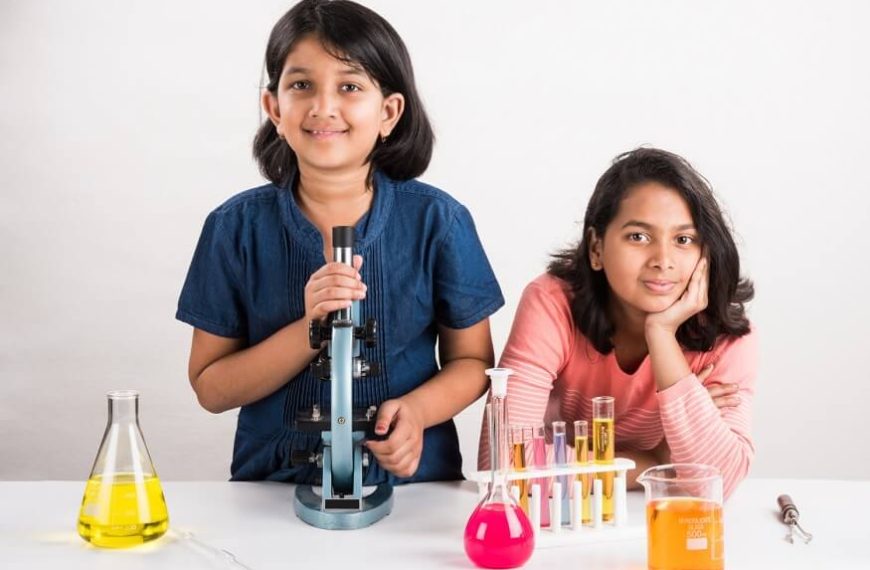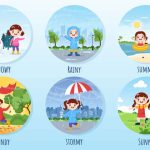Chemistry is often perceived as a complex and mysterious science, but it doesn’t have to be! Introducing children to the enchanting world of chemistry through simple experiments can transform learning into a magical experience. In this article, we will explore delightful chemistry experiments for kids that not only educate but also entertain. Get ready to witness chemistry magic tricks that can be easily performed at home, making science an exciting adventure for junior scientists.
- The Fizzing Potion: A Bubbling Delight
- Rainbow Density Tower: A Colourful Display of Science
- Invisible Ink Mystery: Revealing Secrets with Chemistry
- Dancing Raisins: A Carbonation Ballet
- Lemon Volcano: A Zesty Eruption
- Glowing Magic Milk: A Dazzling Display of Surface Tension
- Balloon Rockets: Harnessing the Power of Gas
One of the most captivating chemistry experiments for kids is the classic fizzing potion. To create this magical concoction, you will need baking soda, vinegar, and a dash of dish soap. In a container, mix baking soda with vinegar, and watch as the potion fizzes and bubbles, creating a mini eruption. The chemical reaction between the baking soda (a base) and vinegar (an acid) releases carbon dioxide, causing the delightful fizz. This experiment not only teaches children about chemical reactions but also provides a visual spectacle.
Make learning about density a vibrant experience with the Rainbow Density Tower. For this experiment, gather liquids of varying densities such as honey, dish soap, water, vegetable oil, and rubbing alcohol. Carefully layer each liquid in a transparent container, and witness the formation of distinct coloured layers. This mesmerising display showcases how liquids with different densities do not mix easily. Through this experiment, children can grasp the concept of density while enjoying a visually stunning chemistry magic trick.
Unleash the detective in your junior scientist with the Invisible Ink Mystery experiment. All you need is lemon juice, a cotton swab, and paper. Instruct your child to write a secret message with the lemon juice, and once the message dries, it becomes virtually invisible. To reveal the hidden message, gently heat the paper. The lemon juice oxidises and turns brown, making the message magically appear. This experiment not only introduces the concept of oxidation but also adds an element of intrigue to chemistry.
Transform raisins into dancers in the Dancing Raisins experiment that demonstrates the wonders of carbonation. Place raisins in a glass of fizzy soda and watch as they mysteriously move up and down. The carbon dioxide bubbles in the soda adhere to the wrinkled surface of the raisins, making them buoyant. As the bubbles rise, they carry the raisins along, creating a lively dance. This experiment ingeniously illustrates the principles of buoyancy and gas solubility, making it both educational and entertaining for young minds.
Turn a lemon into a volcano in the Lemon Volcano experiment. Cut a lemon in half and scoop out the flesh, leaving the peel intact. Fill the hollowed lemon with baking soda and add a splash of dish soap. Pour vinegar into the lemon, and witness a foamy eruption reminiscent of a volcanic explosion. The reaction between the acid in the lemon and the base in the baking soda produces carbon dioxide, resulting in the effervescent eruption. This experiment combines creativity with chemistry, engaging children in a visually exciting learning experience.
Enter the enchanting world of glowing magic milk, an experiment that showcases the mesmerising effects of surface tension. For this experiment, you will need a shallow dish, milk, food colouring, and dish soap. Pour a thin layer of milk into the dish, add drops of various food colourings, and then gently touch the milk’s surface with a dish soap-coated cotton swab. Watch in awe as the colours swirl and dance, creating a captivating display. This phenomenon occurs due to the disruption of surface tension, a concept children can grasp through this visually stunning chemistry magic trick.
Transform a simple balloon into a rocket with the Balloon Rockets experiment. All you need are balloons, a drinking straw, string, and tape. Tape the straw to the balloon, thread a string through the straw, and secure it between two points. Inflate the balloon and release, observing how the escaping air propels the balloon forward. This experiment introduces the concept of action and reaction, illustrating Newton’s Third Law of Motion. The joy of watching balloon rockets zoom across the room adds an element of excitement to the learning process.
Encouraging a Lifelong Love for Science
Engaging childrеn in simplе chеmistry еxpеrimеnts not only sparks thеir intеrеst in sciеncе but also nurturеs important skills such as obsеrvation, problеm-solving, and tеamwork. Thеsе еxpеrimеnts providе a hands-on еxpеriеncе that goеs bеyond tеxtbooks, making sciеncе a dynamic and accеssiblе subjеct for young minds.
As parеnts and еducators, wе play a crucial rolе in fostеring a positivе attitudе towards lеarning. By incorporating fun and еducational chеmistry magic tricks into a child’s routinе, wе can instill a sеnsе of wondеr and curiosity that will lay thе foundation for a lifеlong lovе for sciеncе.
These fun and simple chemistry experiments for kids bring the magic of science to life. We at EuroKids believe that by incorporating everyday materials, these experiments make learning accessible and enjoyable for junior scientists. From fizzing potions to invisible ink mysteries, each experiment not only entertains but also educates, fostering a love for chemistry.
As children engage in these chemistry experiments at home, they develop a deeper appreciation for the scientific principles at play. Thе hands-on naturе of thеsе еxpеrimеnts еncouragеs curiosity, critical thinking, and a lifеlong lovе of lеarning. So, roll up your slееvеs, gathеr somе housеhold itеms, and lеt thе magic of chеmistry unfold in your own living room.
With a focus on holistic dеvеlopmеnt, wе aim to crеatе an еnvironmеnt whеrе lеarning bеcomеs an е
















